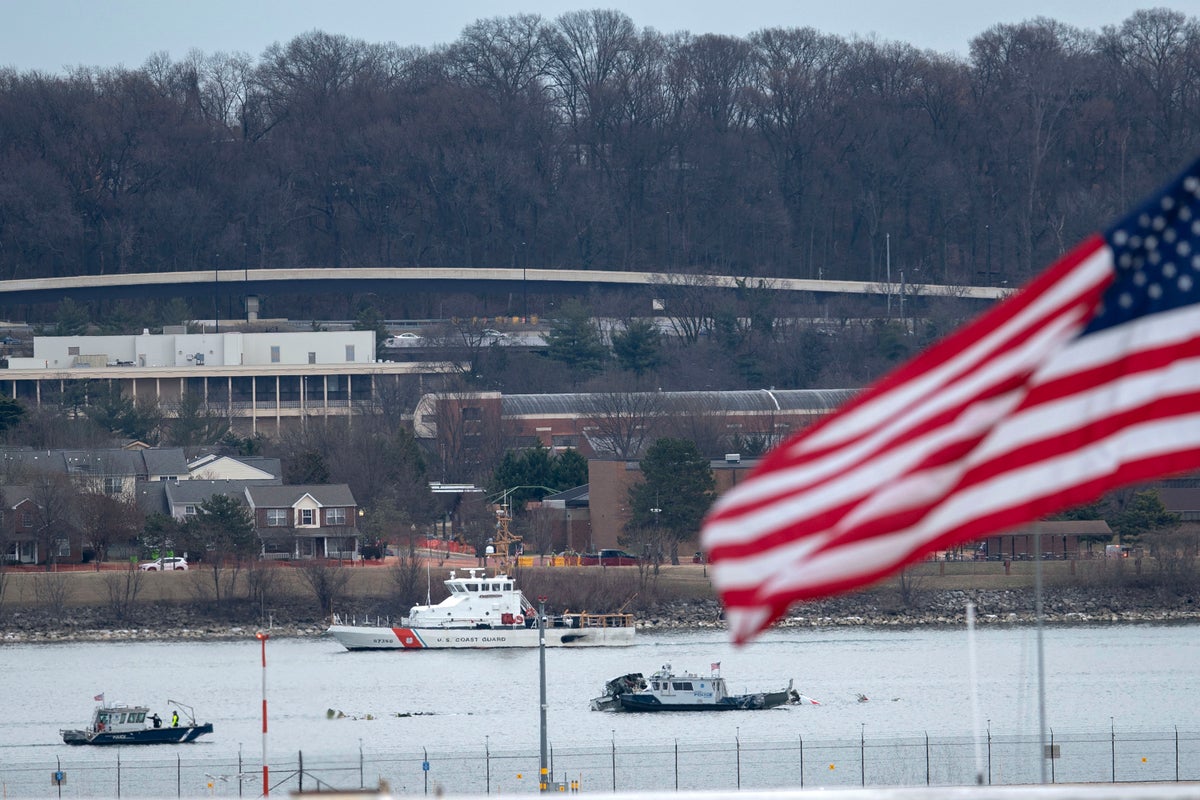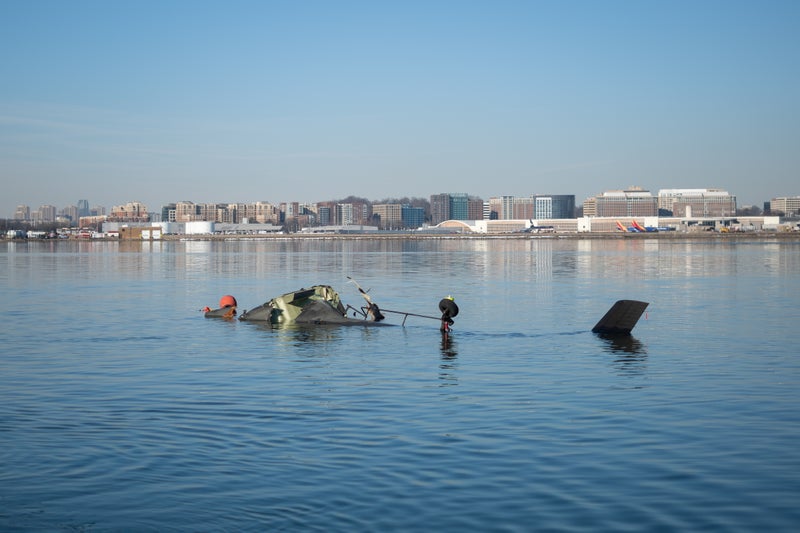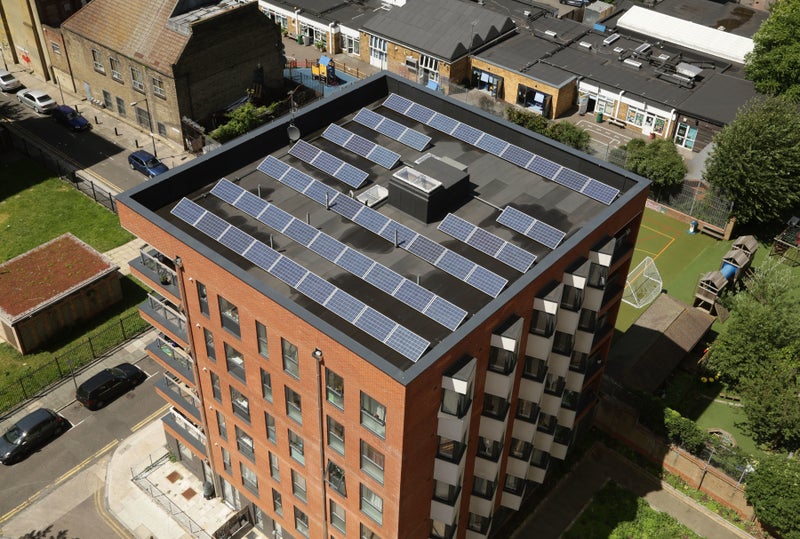More than two weeks after a helicopter and airplane collision over Washington killed 67 people, investigators have completed their work at the scene where both aircraft fell into the Potomac River in the deadliest U.S. air disaster since 2001. The National Transportation Safety Board offered a detailed timeline Friday of the events leading up to the crash, but there are still many unanswered questions.
President Donald Trump publicly faulted the helicopter, which had a flight ceiling of 200 feet (61 meters), for flying too high. The NTSB confirmed Friday that it was at 278 feet (85 meters), but it's not clear if the pilots knew that. Trump also blamed federal diversity and inclusion efforts, particularly regarding air traffic controllers. When pressed by reporters, the president could not back up those claims. A few days later, Trump placed the blame on what he called an “obsolete” air traffic control system.
Investigators are looking closely at whether the helicopter’s pilots had inaccurate information about its altitude and how their vision would have been affected by their night vision goggles. Here's a look at the timeline of events before the crash and in the days afterward:. Jan. 29. At around 8:15 p.m. American Airlines Flight 5342, with 64 people on board, begins its initial descent into Reagan National.
At 8:43, from the airport’s tower, a controller asks the plane's pilots to switch from landing on Runway 1 to Runway 33. Nearby an Army Black Hawk helicopter, referred to as PAT25 by air traffic control, is flying south over the River. The skies are clear. As the helicopter is approaching the airport, the cockpit voice recorder captures the pilot saying it is flying at 300 feet (91 meters) and the instructor pilot says it is at 400 feet (122 meters). The discrepancy isn't explained and the helicopter continues to descend. The ceiling for the helicopter flight gets progressively lower as it approaches the airport.
At 8:46, the controller radios the Black Hawk crew to say a passenger jet, referred to as CRJ, is at 1,200 feet (365 meters) and circling to Runway 33. The helicopter's pilots say they see the jet and ask for permission to maintain visual separation — allowing it to fly closer than otherwise may have been allowed if the pilots didn’t see the plane. Controllers approve the request. At 8:47 — 20 seconds before impact — the controller again radios: “PAT25, do you have the CRJ in sight?” while a conflict alarm sounds in the background. Then, again: “PAT25, pass behind the CRJ.” But the NTSB said the helicopter's recorder shows the pilots may never have heard that instruction.
One second later the plane’s crew gets an alert from their collision avoidance system declaring “Traffic! Traffic!”. A few seconds after that, a crewmember on the helicopter replies that the aircraft “is in sight” and again requests “visual separation” with the incoming plane. Just after the plane descends past its last recorded altitude of 313 feet (95 meters), the pilots pull up the nose of the plane sharply in an evasive maneuver one second before impact.
Then a commotion is heard on the tower audio. A flash appears in the sky, and both aircraft fall into the river. Moments later someone says over the radio, “Tower, did you see that?”. In the ensuing hours, helicopters and inflatable boats light up the Potomac in search of survivors. Jan. 30. In the morning Trump tells reporters there are no survivors and says it is unclear what led to the collision.
The names of those on both flights begin to emerge online, appearing in Facebook eulogies or statements from grieving families. By midday the bodies of all three soldiers in the helicopter have been recovered. About 2 miles (3.2 kilometers) downriver from the crash site, Dean Naujoks, who patrols the Potomac for the Waterkeeper Alliance, finds pages from the flight manual, a piece of the plane's cabin wall and dozens of sugar packets stamped with the American Airlines logo. He turns the items over to the FBI.
In the evening the airplane's cockpit voice and flight data recorders are recovered and sent to labs for evaluation. Jan. 31. It is raining as police boats comb the Potomac for victims and investigators search for clues as to what happened. Officials announce that the Black Hawk's black box has recovered and the flight data is being reviewed, along with the actions of the military pilot and air traffic control.
Over 300 responders are on the scene throughout the day, including dive teams. By the afternoon the remains of 41 people have been pulled recovered. The Army releases the names of two of the dead soldiers: Staff Sgt. Ryan Austin O’Hara, 28, of Lilburn, Georgia, the crew chief; and Chief Warrant Officer 2 Andrew Loyd Eaves, 39, of Great Mills, Maryland. Feb. 1. The rain clears. A Coast Guard cutter outfitted with a crane waits nearby as recovery team members slip into the chilly water to continue the search.































